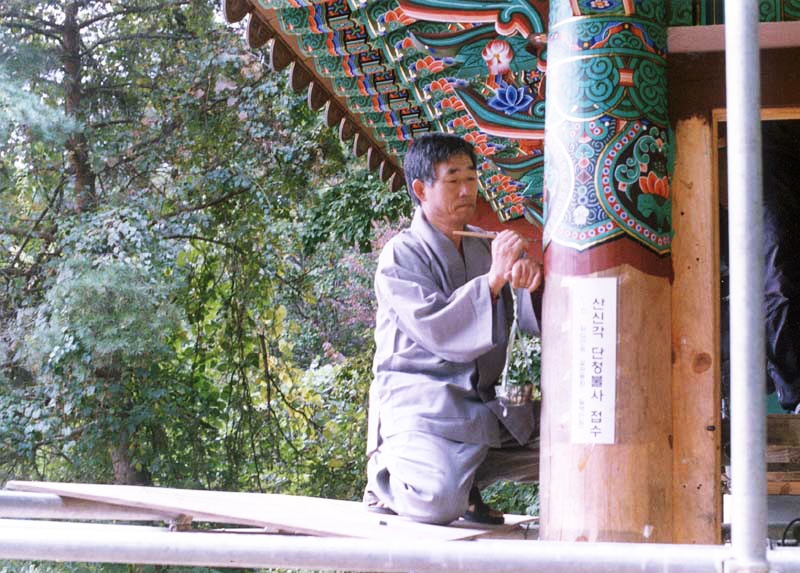- 홈
- Unique Historic Tourism
- Cultural Properties
- Dancheongjang (Dancheong Painting)
Dancheongjang (Dancheong Painting)

Dancheongjang (Dancheong Painting)
- Designated type
Daegu Intangible Cultural Property No. 14
- Holder
Cho Jeong-woo
- Designated date
January 9, 1999
Detailed Information
| Description |
Dancheong is the painting of wooden buildings or crafts, with patterns and pictures using the five basic colors: blue, red, yellow, white, and black. Dancheongjang can be used to refer to either the skill of dancheong painting or an artisan skilled in this type of painting. If the person engaged in dancheong is a monk, he was known as “Geumeo” or “Hwaseung.” Korea’s dancheong can be found in various murals that were painted during the Three Kingdoms Period (57 BC to 668AD). In particular, the murals of the Goguryeo Kingdom are the most characteristic of the architectural styles and dancheong that were prevalent during this time. Dancheong can be found on the tableware, such as on bowls with flower designs and lacquerware, excavated from ancient tombs, but it was mainly used on wooden architectural structures. Dancheong includes the colorful decoration of building walls and the drawing of Buddhist figures, but a large part of it involves painting. When students first learn dancheongjang, they start by drawing Shiwangcho (underworld kings who judge the weight of the people’s sins) and after a great deal of practice, they learn to draw armored Cheonwangcho (heavenly kings). After developing these drawing skills, an artisan eventually becomes a dancheongjang by drawing Buddhas and Bodhisattvas. There are many types of dancheong, such as the geutgidancheong, which is a simple drawing of black lines, morodancheong, which is a drawing of a head, and geumdancheong, which is a luxurious drawing made using the five colors. Dancheong is a field of Buddhist art passed down throughout Korean history that conveys the doctrine and ideology of Buddhism. It serves as a religious art but also as a traditional handicraft technique that expresses the sentiments and lives of the Korean people. Master Cho Jeongwoo is one of the most widely recognized dangcheongjang and has upheld this art form over the years. |
|---|
- 자료 담당자 :
- 문화관광과 차명아 053-664-3252
- 최근자료수정일 :
- 2019.11.29
